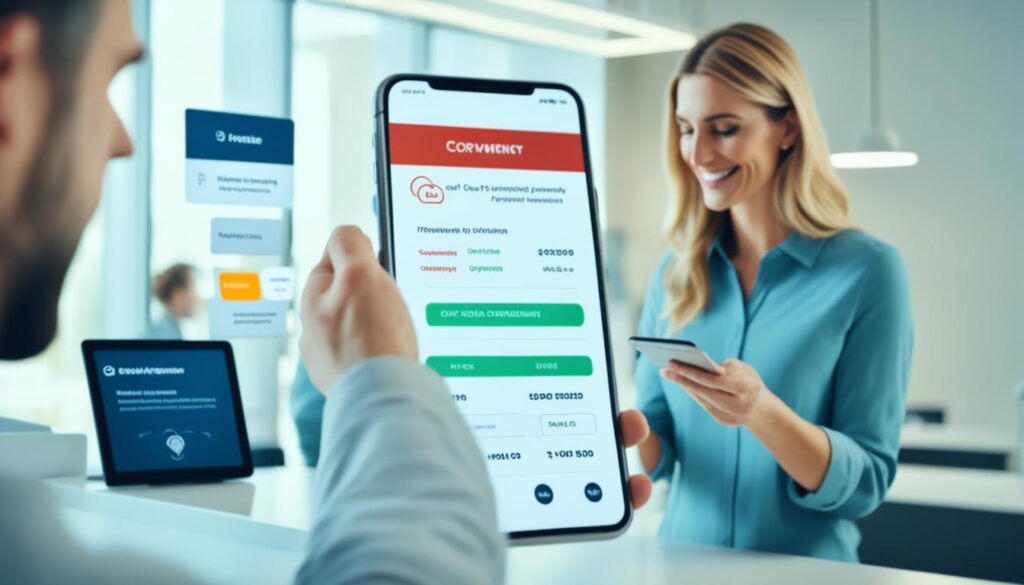A business model is the backbone of any successful enterprise. It is the blueprint that guides how an organization will generate revenue and meet the needs of its target market. With a wide variety of business models to choose from, it’s crucial to find the right fit for your goals and aspirations. In this article, we will explore different types of business models, their characteristics, and their potential for success. Whether you’re a budding entrepreneur or an established business owner looking to make a change, this guide will help you navigate the world of business models and choose the one that suits you best.
Key Takeaways:
- Understanding different business models is essential for finding the right one for your venture.
- There are numerous types of business models tailored to specific industries and goals.
- Examples of common business models include the retailer model, manufacturer model, fee-for-service model, and subscription model.
- The choice of business model should align with your target market and revenue goals.
- Researching and analyzing competitors can provide insights into successful business models in your industry.
Choosing the right business model is a critical decision that can have a profound impact on the success of your venture. By understanding the different options and considering various factors, such as market demand and revenue streams, you can make an informed choice that sets your business on the path to prosperity. So, let’s dive into the world of business models and discover the one that suits you and your customers best.
The Retailer Model: Selling Products to Customers
The retailer model is a popular business model that involves purchasing goods from manufacturers or distributors and selling them directly to customers. Retail businesses play a crucial role in the supply chain, bridging the gap between producers and consumers.
Operating a retail business can provide various advantages, such as:
- Direct customer interaction: Retailers have the opportunity to engage with customers personally, understand their preferences, and build strong relationships.
- Flexible product offerings: Retailers can curate their product selection to cater to specific niches or offer a wide range of products to attract a broader customer base.
- Brick-and-mortar and e-commerce presence: Retailers can choose to sell products through physical stores, online platforms, or both, providing convenience and accessibility to customers.
Examples of retailer models include:
- Grocery Stores: Supermarkets and grocery stores offer a vast array of food and household products to meet the everyday needs of customers.
- Pharmacies: Retail pharmacies provide medications, health products, and professional advice to promote well-being.
- Florists: Local florists specialize in creating and selling beautiful floral arrangements for various occasions.
In the retailer model, success lies in effectively managing inventory, optimizing pricing strategies, offering superior customer service, and keeping up with evolving market trends. By understanding customer demands and providing a seamless shopping experience, retailers can thrive in the competitive retail industry.
The Manufacturer Model: Converting Raw Materials into Products
The manufacturer model is a key business model that involves the transformation of raw materials into finished products ready for distribution. This model is widely used in various industries, allowing manufacturing businesses to produce a diverse range of goods to meet market demands.
Manufacturing businesses play a crucial role in our economy, contributing to job creation and economic growth. They leverage their expertise, machinery, and resources to convert raw materials into high-quality products that can be sold to distributors, retailers, or even directly to consumers.
In the furniture industry, for example, manufacturers source raw materials like wood and metal and convert them into beautifully crafted chairs, tables, and sofas. These finished products are then supplied to retailers who make them available to consumers for purchase.
Another prominent industry that relies heavily on the manufacturer model is the pharmaceutical industry. Pharmaceutical manufacturers transform chemical compounds and ingredients into medicines and healthcare products that improve people’s quality of life. These products are distributed through pharmacies, hospitals, and other healthcare facilities.
Benefits of the Manufacturer Model
- Control over the production process, ensuring quality and consistency
- Ability to customize products to meet specific customer needs
- Potential for higher profit margins by selling directly to consumers
- Opportunity for vertical integration by incorporating distribution and retail functions
Challenges of the Manufacturer Model
- Requires significant investment in machinery, equipment, and facilities
- Risk of inventory build-up if products are not sold in a timely manner
- Dependency on a reliable supply chain for raw materials
- Competition from other manufacturers in the industry
Manufacturing businesses are vital for creating value by transforming raw materials into products that benefit consumers and contribute to economic growth.
Overall, the manufacturer model offers great potential for businesses to create value by converting raw materials into finished products. By leveraging their manufacturing capabilities and understanding customer demands, manufacturers can thrive in various industries and contribute significantly to the economy.

The Fee-for-Service Model: Charging for Specialized Services
One popular business model that is commonly employed by service-based businesses is the fee-for-service model. This model involves charging a set fee for specific services provided to clients. Businesses utilizing the fee-for-service model have the potential to increase their earnings by working with additional clients or by raising their service rates.
In this model, professionals with specialized skills and expertise charge fees for their services, generating revenue based on the value they provide to their clients. Some examples of service-based businesses that operate under the fee-for-service model include hairstylists, accountants, consultants, personal trainers, and real estate agents.
The fee-for-service model allows businesses to tailor their offerings and pricing to meet the unique needs and preferences of their clients. By charging a specific fee for each service rendered, businesses can ensure transparency and clarity in their pricing structure.
One of the key advantages of the fee-for-service model is its flexibility. Businesses can choose to offer various service packages at different price points, allowing them to cater to different client segments and budgets.
Examples of Fee-for-Service Models
Here are some examples of businesses that successfully implement the fee-for-service model:
Smith & Co. Financial Services: Smith & Co. is an accounting firm that offers a range of financial services, including tax preparation, bookkeeping, and financial consulting. They charge a set fee for each service, ensuring transparency and predictability for their clients.
Beauty by Grace Salon: This upscale salon specializes in providing high-quality hair and beauty services. They offer a menu of services, such as haircuts, coloring, and styling, each with a fixed price. By charging a fee-for-service, Beauty by Grace Salon ensures that their clients receive personalized attention and exceptional results.
| Business | Services Offered | Fee-for-Service Pricing |
|---|---|---|
| Smith & Co. Financial Services | Tax preparation, bookkeeping, financial consulting | $200 for tax preparation, $50 per hour for bookkeeping, $500 for a financial consultation |
| Beauty by Grace Salon | Haircuts, coloring, styling | $50 for a haircut, $100 for coloring, $75 for styling |
This table provides a visual representation of how businesses can structure their fee-for-service pricing. It showcases the range of services offered and the corresponding fees for each service.
The fee-for-service model is an effective way for service-based businesses to monetize their expertise and enhance their revenue potential. By charging fees for specialized services, businesses can deliver value to their clients while ensuring a fair and transparent pricing structure.

The Subscription Model: Offering Ongoing Access to Products or Services
The subscription model is a popular business approach that can be effectively applied to both traditional brick-and-mortar stores and e-commerce businesses. This model allows customers to make recurring payments in exchange for continuous access to a specific service or product. By adopting a subscription-based approach, businesses can establish a steady revenue stream and foster long-term customer relationships.
One of the key advantages of the subscription model is its ability to provide convenience and value to customers. Instead of making one-time purchases, customers can enjoy ongoing access to the products or services they desire, often at a discounted rate. This not only enhances customer satisfaction but also encourages loyalty and repeat business.
Examples of Subscription Models
Subscription-based businesses can be found in various industries and offer a wide range of products and services. Here are a few notable examples:
Farm Shares or Community-Supported Agriculture (CSA) Subscriptions: This subscription model is commonly seen in the agricultural sector. Customers pay a recurring fee to receive regular shipments of fresh produce while crops are in season. This enables customers to support local farmers and enjoy a continuous supply of fresh, organic produce.
Streaming Services: With the rise of digital entertainment, streaming services have become immensely popular. Platforms like Netflix, Hulu, and Disney+ offer subscription-based access to a vast library of movies and TV shows, giving customers the convenience of unlimited entertainment on-demand.
Subscription Boxes: Subscription boxes have gained significant traction in recent years, offering curated collections of products delivered directly to customers’ doors on a recurring basis. Examples include beauty boxes, pet subscription boxes, and even meal kits.
The Benefits of Subscription-Based Businesses
Subscription-based businesses offer several benefits, both for customers and the companies implementing this model. Some key advantages include:
- Steady cash flow: The recurring nature of subscription payments provides businesses with a predictable revenue stream, facilitating better financial planning and stability.
- Customer retention: By fostering ongoing relationships with customers, subscription models can improve customer loyalty and reduce churn rates.
- Opportunities for customization: Subscriptions can be tailored to meet individual customer preferences, allowing businesses to offer personalized experiences and targeted product recommendations.
- Upselling and cross-selling: Subscription models create opportunities to upsell or cross-sell additional products or services to existing customers, boosting revenue and customer lifetime value.
Overall, the subscription model offers a flexible and scalable approach for businesses looking to establish long-term, profitable relationships with their customers. By continuously delivering value and meeting customer needs, subscription-based businesses can thrive in today’s competitive market.
| Benefits of Subscription-Based Businesses | Subscription Model |
|---|---|
| Steady cash flow | Yes |
| Customer retention | Yes |
| Opportunities for customization | Yes |
| Upselling and cross-selling | Yes |
Conclusion
Choosing the right business model is crucial for success in any venture. By evaluating market potential, understanding customer needs, and optimizing revenue streams, entrepreneurs can position their businesses for long-term growth and profitability.
Experimenting with different business models allows you to find the most suitable approach for your specific industry and target audience. Analyzing competitors’ strategies and successes can provide valuable insights, helping you refine and enhance your own business model.
Staying informed about emerging business models and embracing innovation are key to staying ahead in today’s dynamic business landscape. The business model canvas provides a visual framework for designing, analyzing, and iterating business models, enabling entrepreneurs to identify areas of improvement and seize new opportunities. By continuously innovating and adapting to changing market dynamics, businesses can unlock new growth avenues and stay relevant in their industries.






